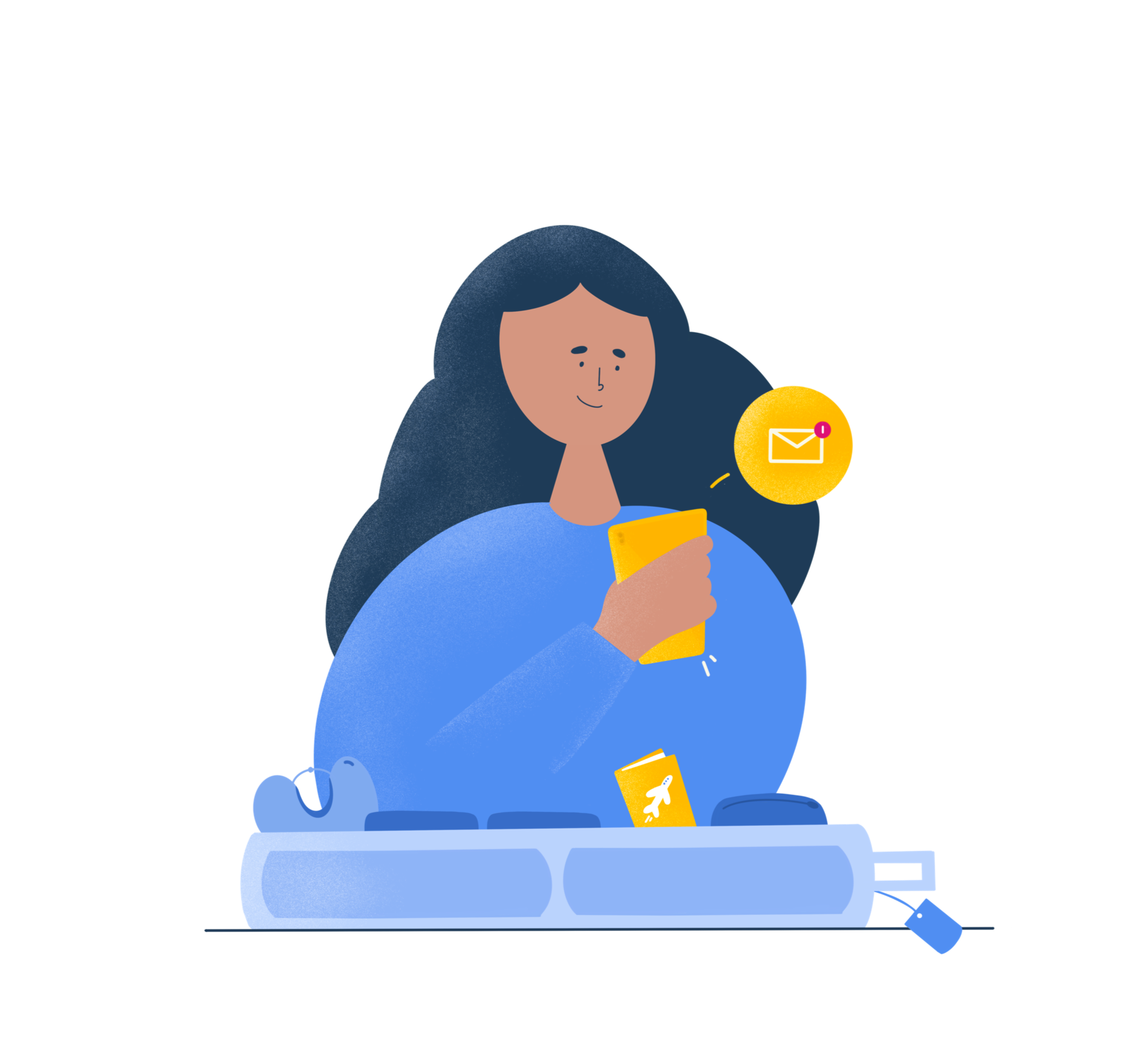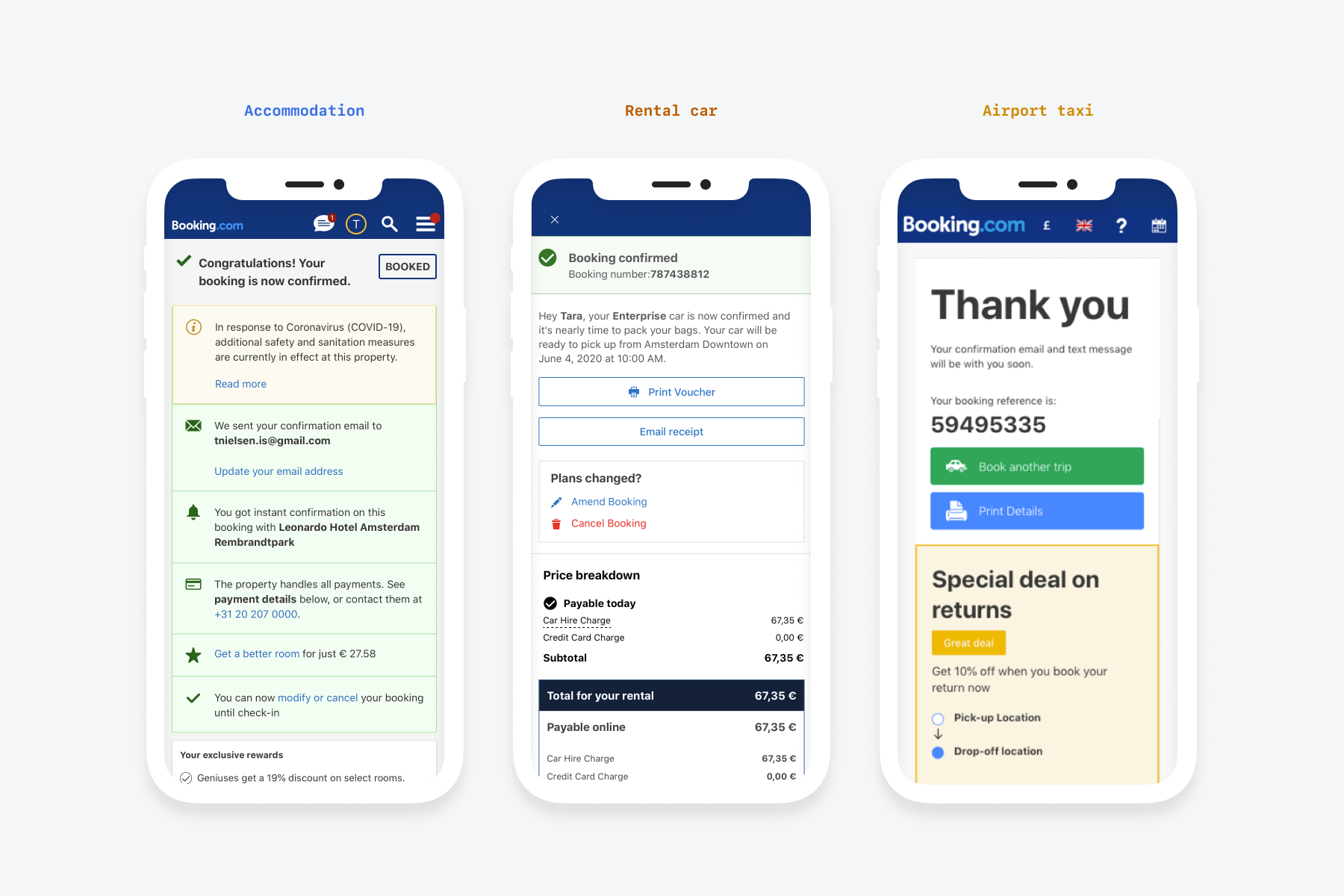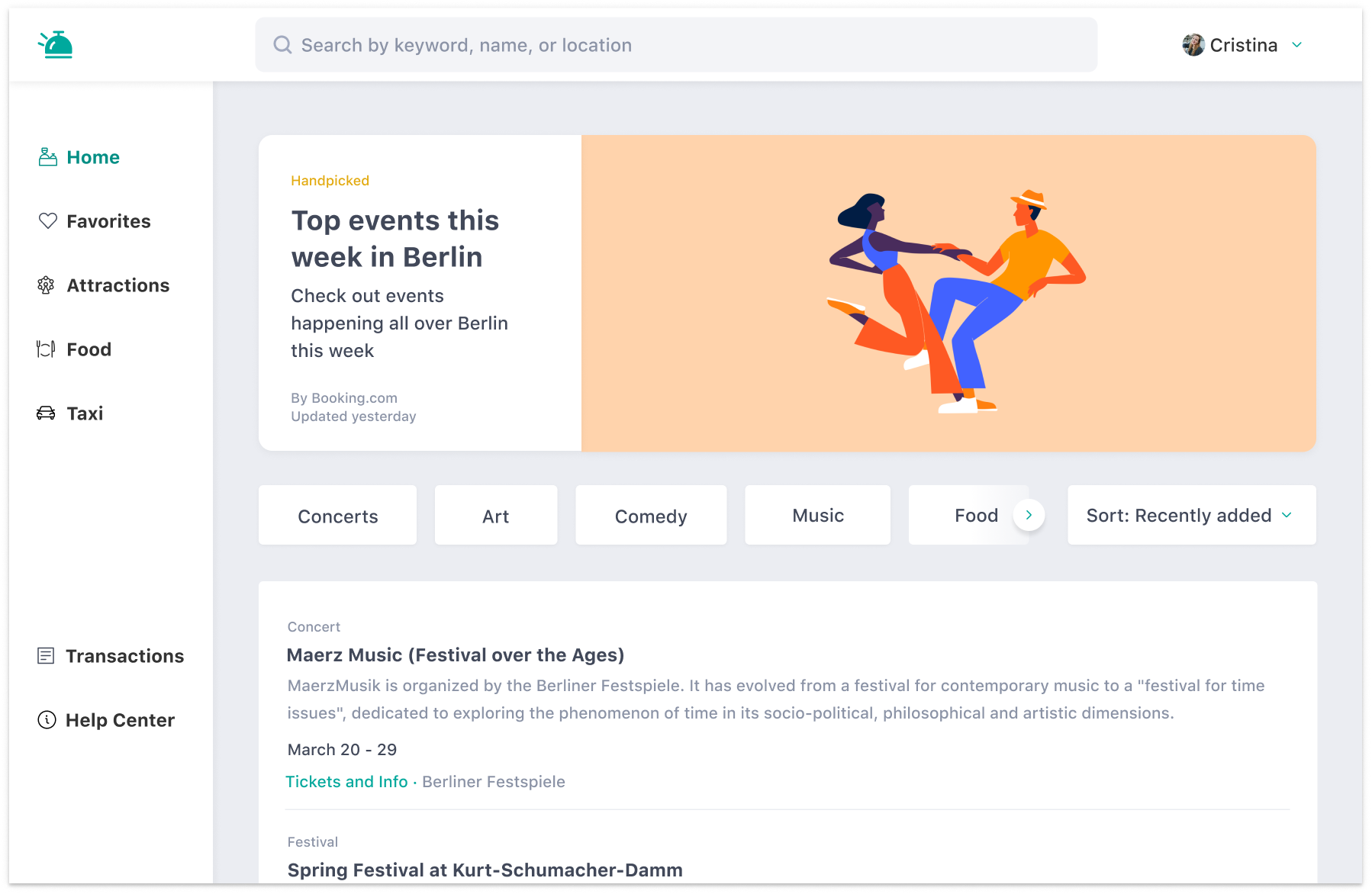
Trip Management: The post-booking experience
The problem: Currently, the experience of viewing, modifying, and cancelling a booking isn’t as seamless as we’d like it to be. Each of our products have their own hierarchy of info, design language, and placement of major actions (see screenshot below). With COVID-19, travellers have been reaching out to our support team in massive volumes. Our goal is to bring consistency, clarity, and assurance to bookings.

The process: We started by categorising the requests received by the support teams. They were mostly around changing dates, cancelling, or confirming a reservation. A quick look at our products showed that these three actions are pretty hard to find or change. A card sort helped us understand the mental models of the travellers.
The outcome: This project is in-progress. We are going live with different teams, as they teams add these components to their flows. The end goal is to have consistent design language across all post-booking touchpoints. Below, you can see the aligned booking pages that have gone live for Attractions, Flights, and Taxi.

My role: In the design phase, I create the common components and flows that are used across different products. I also validate the new designs with user testing and design reviews, by collaborating with other designers.
A a massive team effort, I regularly work with 20+ designers on their respective products to co-design, review, and finalize the agnostic components and flows. I create production-ready mockups for our developers to implement the shared designs. Stakeholder management, crafting a roadmap with design leadership, and collaborating with the Design Systems team are part of my responsibilities as well.

Concierge: A tool for hotel front-desk staff
The problem: Concierge is a B2B tool for our hotel partners to book tours and tickets for their guests. Our research showed that hotels valued a connection with their guests, advising them on places to go and where to eat. However, when the MVP launched in Amsterdam, only 10% of the onboarded properties were opening the tool; and fewer were booking tickets.

The process: I started by setting up interviews with 15 hotels in Amsterdam to learn why the tool doesn’t help them. From the interviews, we learned that staff didn’t want to be ticket sellers, but wanted to be insightful local experts. We also found that the product didn’t update info about happenings in the city, so the static info wasn’t helpful to them. Entering guest details was another problem they faced. With some brainstorming, design iterations, and user testing with partner hotels, we revamped the entire product.
The outcome: To validate our new hypotheses, we tested several features, within and outside of the Concierge app.
- Hotel staff want to be local experts, knowledgeable of the latest events in the city and neighborhood. To test this, we added dynamic Events and Sustainability lists to the tool in Amsterdam.
- The staff usually have a set of favorite recommendations and tend to repeat them frequently. To communicate this easily, we created a new feature called "Top 5 Property Picks", where partners added recommendations, sent them to guests before check-in for guests to book it themselves.
- Observing hotel lobbies taught us that physical touchpoints are as crucial as digital. We created print material and QR codes that guests could scan to get access to staff picks and other helpful info during their stay.

My role: As the lead designer and researcher on this project, I created and conducted our interviews with the account managers in Amsterdam and Berlin. As we brainstormed new ideas, I created and tested a variety of design prototypes, iterated them, and created production-ready mockups for developers.
This project pushed our small team to get out of the comfort zone of our MVP Concierge tool. We had to pivot what we were building and experiment with new ideas.

Shopping: Helping travellers shop smartly
The problem: Booking.com Shopping was a new vertical introduced in 2018. We set out to help travellers with their shopping needs on a trip. From our user research and jobs to be done, we found that shoppers have several requirements. They care about where to go (content), how much they save (discounts), unique items from the destination, and even luggage and storage space. To find our product/market fit, we launched five MVPs to test these hypotheses.
Of the projects we launched, two were our biggest successes.
Discounts at Duty Free
The first project tested the hypothesis that travellers seek discounts, and it was positioned in Duty Free at airports. Two days before their trip, travellers were told about a new offer from Booking.com. With a personal QR code, they get a discount on their Duty Free shopping. The pilot's success was overwhelming, with our team earning commissions over €100K in the first 3 months of launch.

Shoppr: A price comparison app
The second project validated that travellers want to know where and how to shop on their trip. We launched a price comparison app for fashion, cosmetics, and food brands between countries. If the price of certain brands is significantly cheaper at their destination, we alerted the traveller. From our analysis, Mango is 40% cheaper in the Netherlands than in the US, while Levi’s and Vans are 35% cheaper in the US than in the Netherlands. This phenomenon exists. The app tested very successfully within the company, but hasn’t launched due to legal concerns.
Creating a style guide
Shopping as a new vertical meant that we had to inspire our customers to trust and want our products. We have the extra insider knowledge on pricing, relevant brands, and best products to shop for. Our brand had to feel luxurious, aspirational, and beautiful to our customers. The branding we needed didn't fit with Booking.com's core branding. So after a collective understanding of the Shopping customer base, a fellow designer and I created a new brand identity and style guide for the team.



My role: The Shopping team was a real example of “work fast and learn things." For 4 of 5 projects, I was the lead designer, while a fellow designer worked with me on the price comparison app and style guide. It was a great start to my journey at Booking.com.